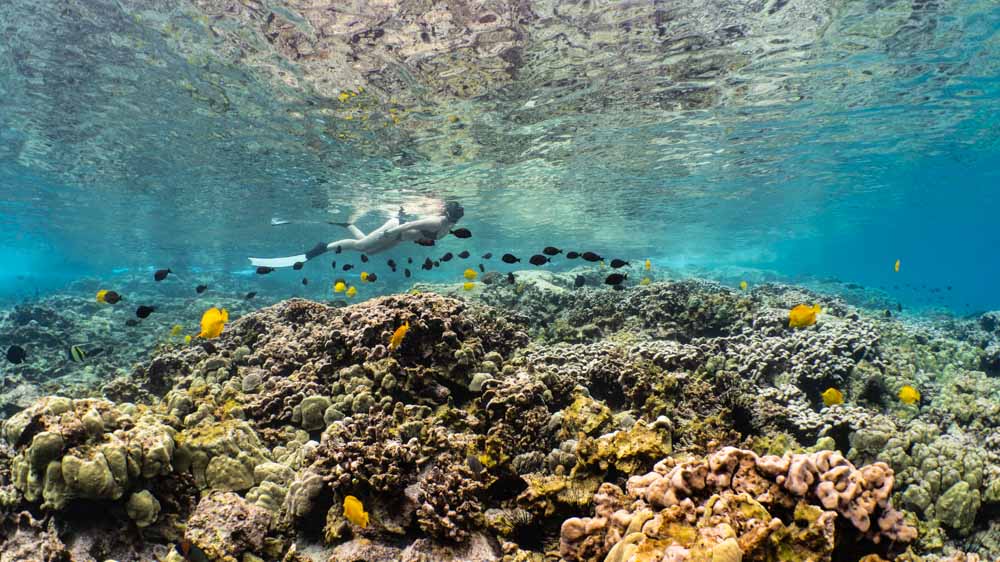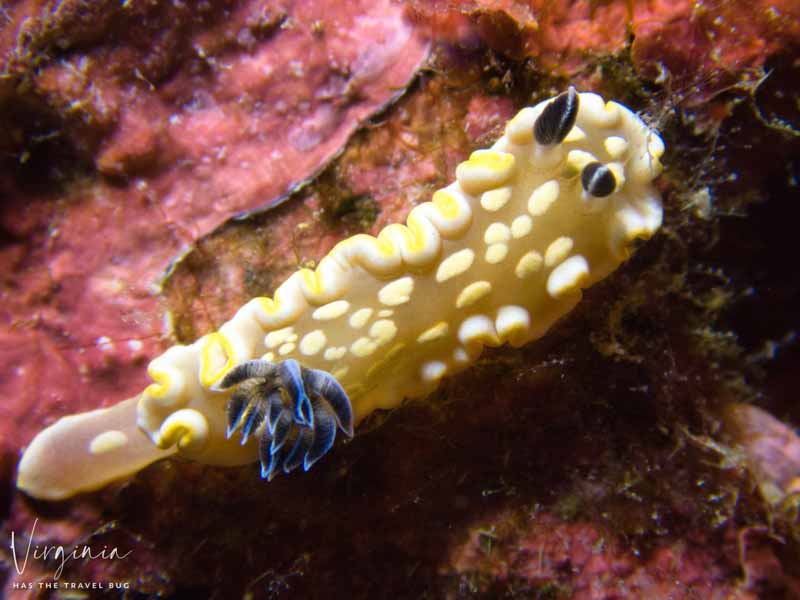Guide to the Best Time to Snorkel Big Island

Guide to the Best Time to Snorkel Big Island
Are you looking to visit Hawaii’s Big Island for the sole purpose of getting wet and seeing the marine life, gorgeous reefs, giant manta rays and lava arches up close and personal? The Big Island of Hawaii is by far the best island for snorkeling among all of the Hawaiian Islands but the snorkeling experience you have may vary based on the time of year decide to visit. So when is the best time to snorkel Big Island?
There are several factors that can influence when people decide to visit the Big Island. If you could simply go anytime and you just want to go when the snorkeling is best you then have to decide what you want to see and what’s most important to you.
Factors Influencing Your Snorkel Experience
Water Temperature by Time of Year

Some people have a natural layer of “bioprene” (fat) on their bodies that can help stave off the chills when they are in the water for an extended period of time others are just naturally warm blooded (Canadians). For you lucky individuals the water temperature will not be as big a factor as it is for say someone that lives in the Florida keys and has 4% body fat. So if water temperature is an important factor for you when determining the best time to snorkel Big Island read on.
Check out our Water Temperature in Kona Hawaii Guide to learn more about specific water temperatures. Typically when most people go Kona snorkeling on the west side of the Big Island the water is warmest in July through September reaching temperatures as high as 84 degrees fahrenheit (29°C) and coolest in January through April reaching lows of 76 degrees fahrenheit (24°C) and below. The Big Island is subtropical which means it’s not going to be as warm both above and below the surface as say the Caribbean or someplace that is closer to the equator. The ocean is also typically cooler on the eastern (Hilo) side of the Big Island and warmer on the western (Kona) side. If you’re going to attempt to snorkel Big Island’s eastern (Hilo) side the water temperatures will range from 70 degrees F (21°C) up to 76 degrees F (24°C).
Water Temperature in Kona Hawaii range: 76 – 84°F
Water Temperature in Hilo Hawaii range: 70 – 76°F
To see up to date water temperatures for the Western side of the Big Island click here to visit the NOAA monitoring station at Kawaihae. (keep in mind this is only indicative of the temperatures along the western coast and is not an exact match with temperatures up and down the rest of the coast).
Ocean Surface Conditions on Big Island
Hovering on the surface inches from the reef as multicolor fish dance along the golden corals. This experience can be either mesmerizing or just plain dangerous depending on how calm the ocean you are floating in remains.

Snorkeler swims over lush corals surrounded by schools of fish in Kealakekua Bay on the Captain Cook Snorkeling Tour
Swell
Typically oceans develop swell from storms or wind far off in other parts of the ocean. These open ocean waves eventually make their way over to the Big Island and when they come in to shore they can make a Big Impact. This makes snorkeling in shallow water a treacherous endeavor.
Wind Waves
Another type of surface disturbance are wind waves. These typically smaller more frequent waves are like the yellow jacket of surface disturbances. They just won’t go away and they are really annoying. This is common when you have wind blowing along the coast or on shore.
Which side is the best side?
The Big Island has 2 sides. The windward side is the east (Hilo) side. And the leeward side is the west (Kona) side.
The eastern half of the island typically gets more swell and wind waves and is not often very good for snorkeling. It also gets more rain which causes runoff and cloudy water. People will often travel over to the Kona side of the island just to go snorkeling because it is so good there.
The western half of the Big Island is typically much better in regards to both wind waves and swell. This is because the other Hawaiian Islands act as a bit of a shelter from these waves. When the swell gets through it can be massive with waves crashing along the coast and reaching heights of up to 80 feet. This is a bad time to get in the water but a great time to go observe the impressive power of the ocean. We recommend visiting either the end of the world which is located at the end of Ali’i drive or Nelha (Natural Energy Laboratory of Hawaii Authority) park to observe this impressive sight up close. Be careful though don’t get too close!
The best time to snorkel big island based on surface conditions is typically June – October with June typically being calmer because of fewer storms in the south. If some south swell does arise though it can easily be avoided by going to beaches and snorkeling spots that face north.
Photo by Bo Pardau
Best Time of Year for Marine Life on Big Island
Best Time of Year for Big Animals
The Big Island is one of the great places in the world for seeing large animals up close and personal. There’s Humpback whales, dolphins, tigersharks, hammerhead sharks and even whale sharks! While some of these creatures can be seen year-round others are more commonly spotted during certain times of the year. Here’s your best bet for seeing specific critters and when you might get the best chance to see them.
Year-Round Creatures
- Monk Seals
- 4 species of Dolphin
- Whale Sharks
- Tigersharks
- Pilot Whales
- Turtles
- Eagle Rays
- Manta Rays
- Sperm Whales
- Pygmy killer Whales
Seasonal Creatures
Humpback Whales
These migratory whales come in the winter months from Novemberish until around April every year to give birth and then make their way back to Alaska. While you won’t be able to snorkel with these massive beasts you can get close enough to see them well on a Kona Snorkel Trips tour. Typically the daytime tours are best for these encounters. Sometimes you’ll have the good fortune of spotting a mother Humpback with her calf practicing how to jump for the first time!
Hammerhead Sharks
These sharks are an impressive sight underwater. You may spot them from the surface as their dorsal fin pierces the surface. These animals travel in large schools of up to 200 individuals with a dominant female leading near the top. They are also very shy so when snorkeling with them it’s important to go with a tour provider that knows how to approach them without spooking them.
Whale Sharks
While whale sharks were thought to only be seen more commonly in the winter months we are now finding they are popping up year around. Is this a change in their behavior? Who knows! There is currently no proof of any seasonality in their behavior. If anything changes we’ll be sure to update this.
Best Time of Year for Small Animals
Usually you’ll be able to find plentiful reef fish and other critters if you know where to look year round. The only thing keeping you from them will be selecting the right snorkel spot and going on a day when the conditions are favorable. Typically this means staying south of the airport during the winter swells and north of the airport during south summer swells. This is especially important if you plan to stay in shallow water where you can be near the reef and all of the critters. The best time to snorkel Big Island if you’re into spotting nudibranchs (tiny colorful sea slugs) will usually be in the summer months.

Best Time of Year for Good Visibility
The visibility, or how far you can see though the water, is important when snorkeling because when it’s bad you won’t be able to see much. This is especially important when snorkeling in deeper water or with snorkelers that are not able to dive very deep below the surface. Kona is known for having exceptional visibility compared to the Hilo (eastern) side or even the other Hawaiian Islands. This is because we have less sand to stir up and make the water cloudy as well as calmer seas.
The visibility is closely linked to the ocean surface conditions so when it’s rough it’s poor and when it’s calm it’s good. This can be especially noticeable in shallow sandy spots like Kailua Bay. So it’s more likely that the visibility will be better when the sea is calmer which it is more often in the summer months through November.
Best Time of Year Based on Tourism
Being that the Big Island of Hawaii is the best place to snorkel in Hawaii it’s no surprise that it can get pretty busy with tourists. While the island itself it huge compared to the numbers of people on the island tourists will often aggregate in the hot spots because they naturally want to see what’s best known and what makes the island different.
If you have the flexibility to come Kona snorkeling any time of year and you want both great snorkeling as well as fewer people at the snorkeling hot spots and beaches the best time to snorkel Big Island will be September. Usually the island is quieter this month and it will be easier to find rental vehicles as well as accommodation.
Be sure to book with some of the more prominent operators though because if you book a Kona snorkel tour with a lesser company you may get cancelled on last minute if they are unable to meet the minimum number of required guests. You can book a seat aboard Kona Snorkel Trips to be sure to get a great experience as well as a successful tour.
FAQ’s
What Time of Year is best for Snorkeling on Big Island?
Based on temperature, swell, and visibility the western side Kona snorkeling will typically be best in May – November with the ideal sweet spot being July – October. During the summer there is often swell from the south near the equator as storms pass by from Mid July – October. During the winter months the Kona side will receive swells from the northwest Pacific ocean. These swells are typically much larger and more frequent than those during the summer months. If you take into account all of the other factors and include tourism September is the best time for snorkeling on Big Island.
When is the Water Warmest on the Big Island?
July through October the water temperatures remain at peak levels Typically ranging from 80 – 83°F with an average of 81.4°F
When is the Ocean Calmest on the Big Island?
June – October are typically much calmer months than November – May when there are often large northwest swells.
When is the Visibility Best on the Big Island?
Typically visibility will be better in June through October when the swell is smaller.
Where to Snorkel on Big Island
Now That You’ve decided on the best time to snorkel big island it’s time to book a tour or check out some snorkel spots on our Guide to the 15 best snorkeling Big Island spots. If you’re looking to get some gear check out our Complete Snorkel Gear Guide.
